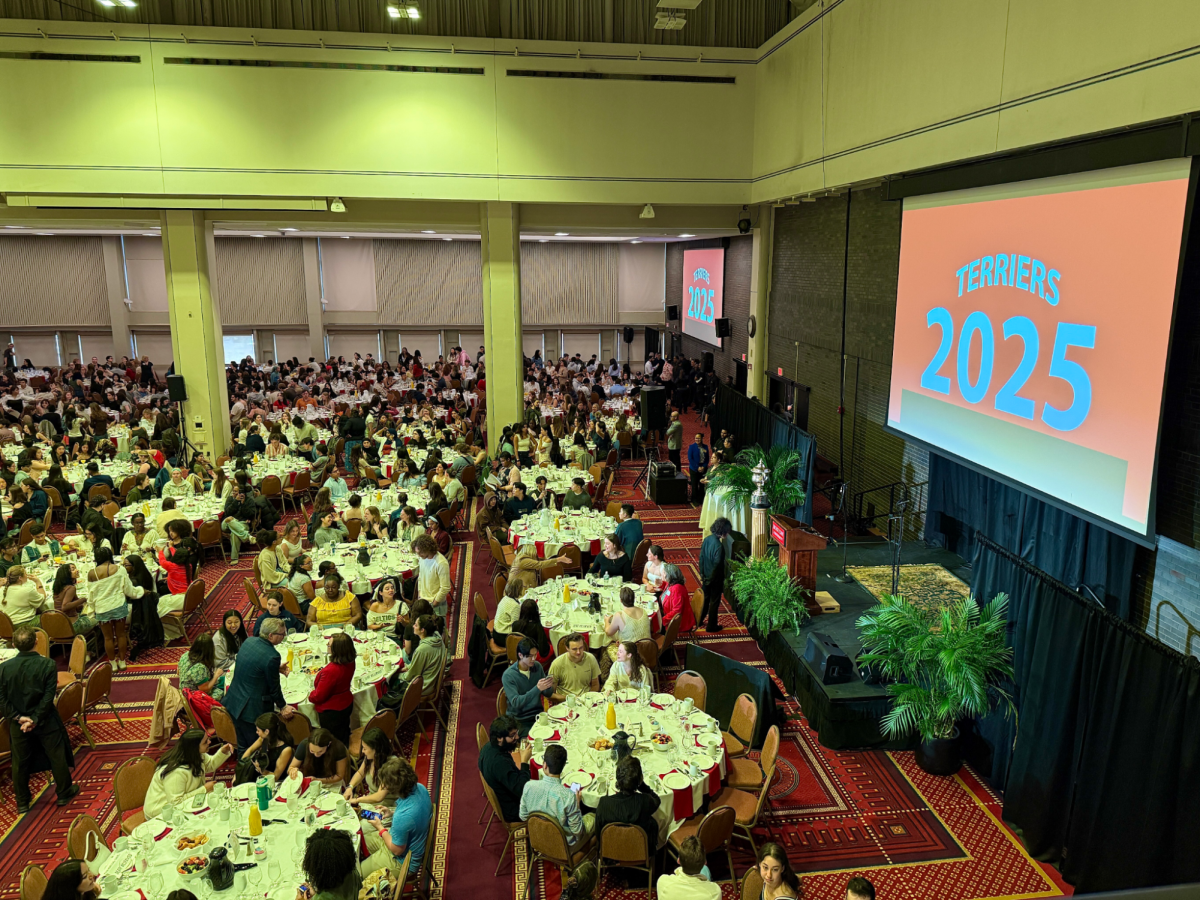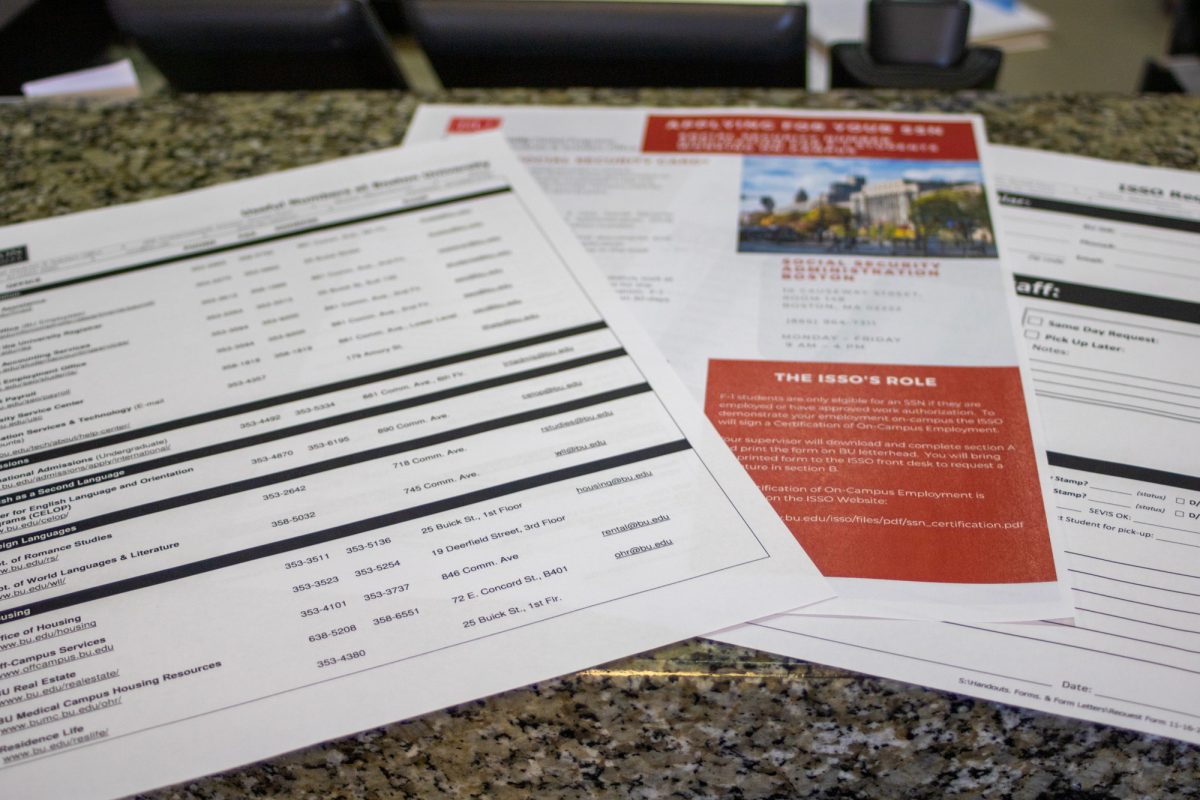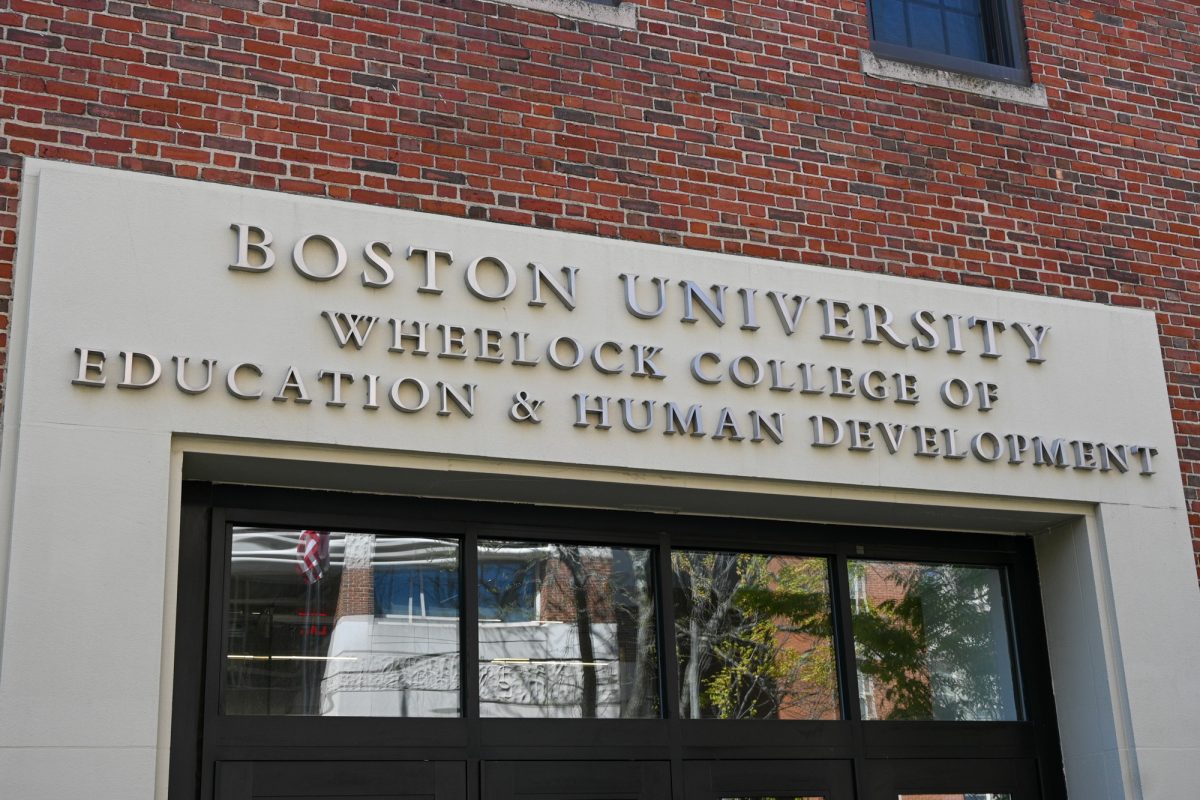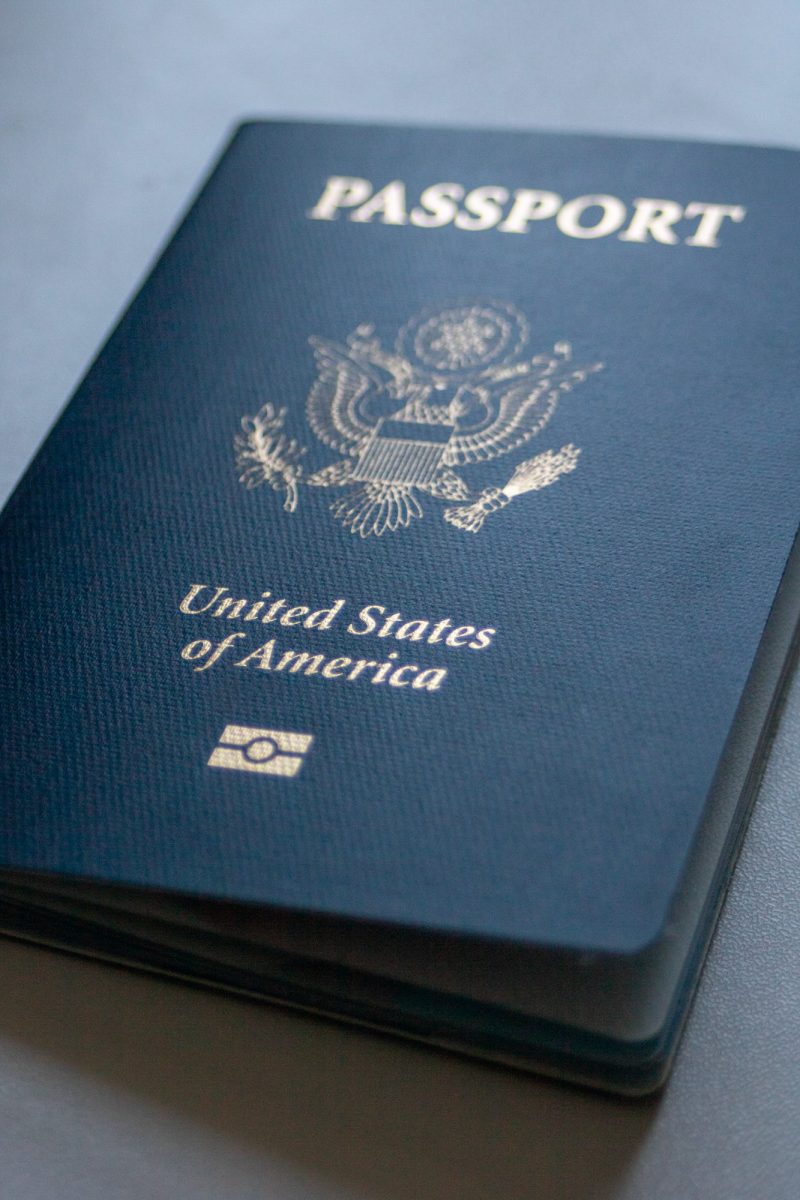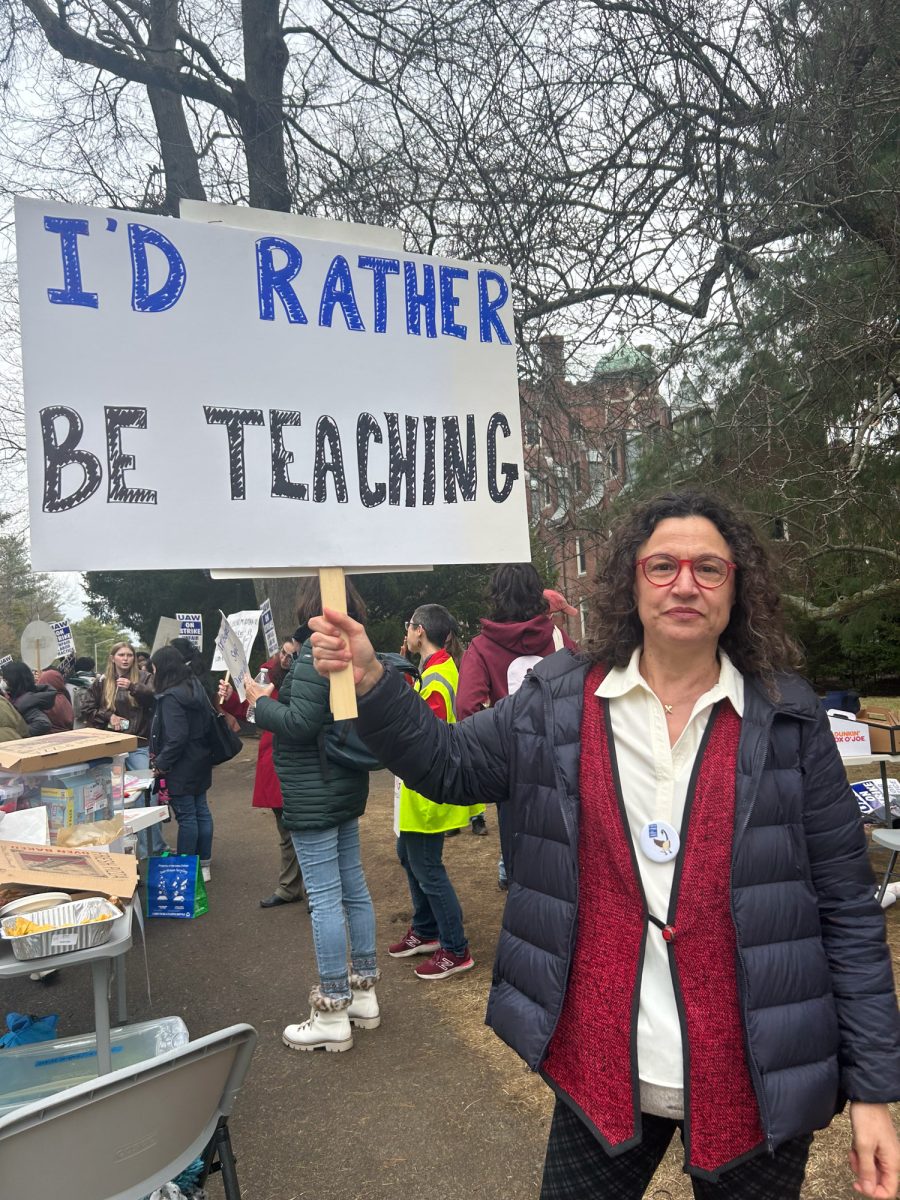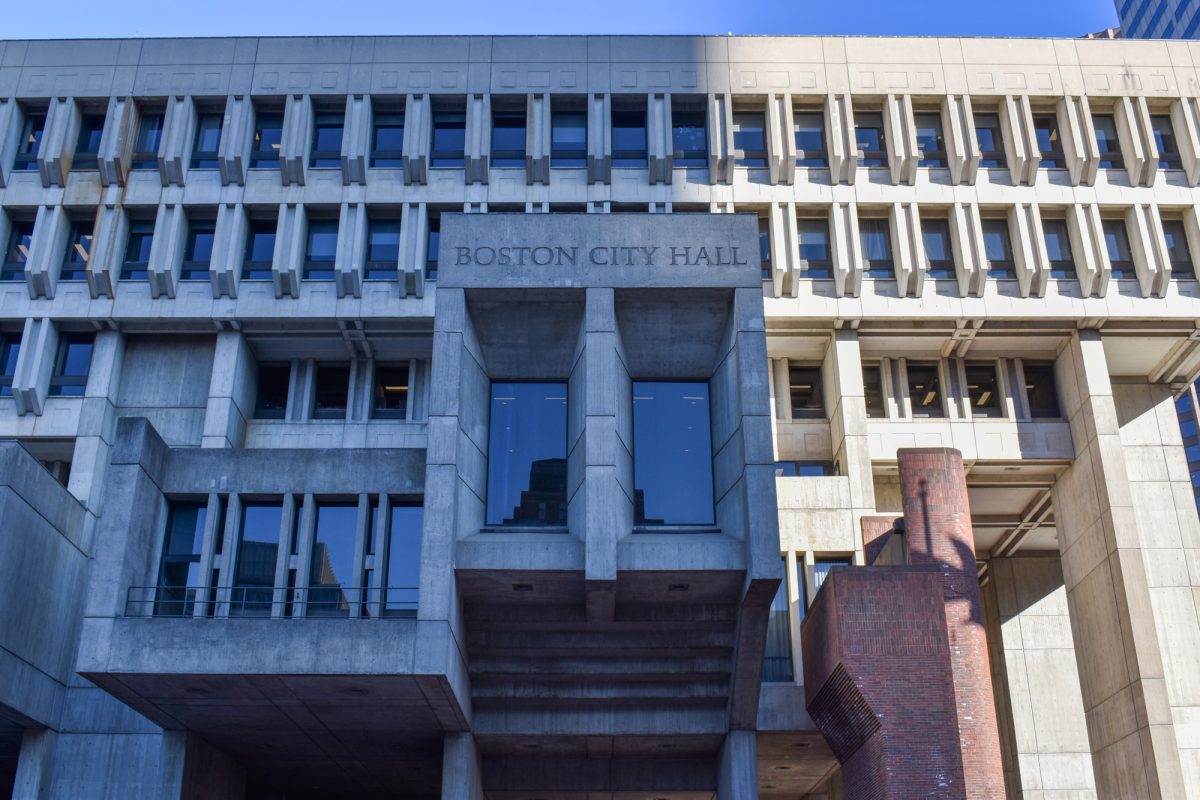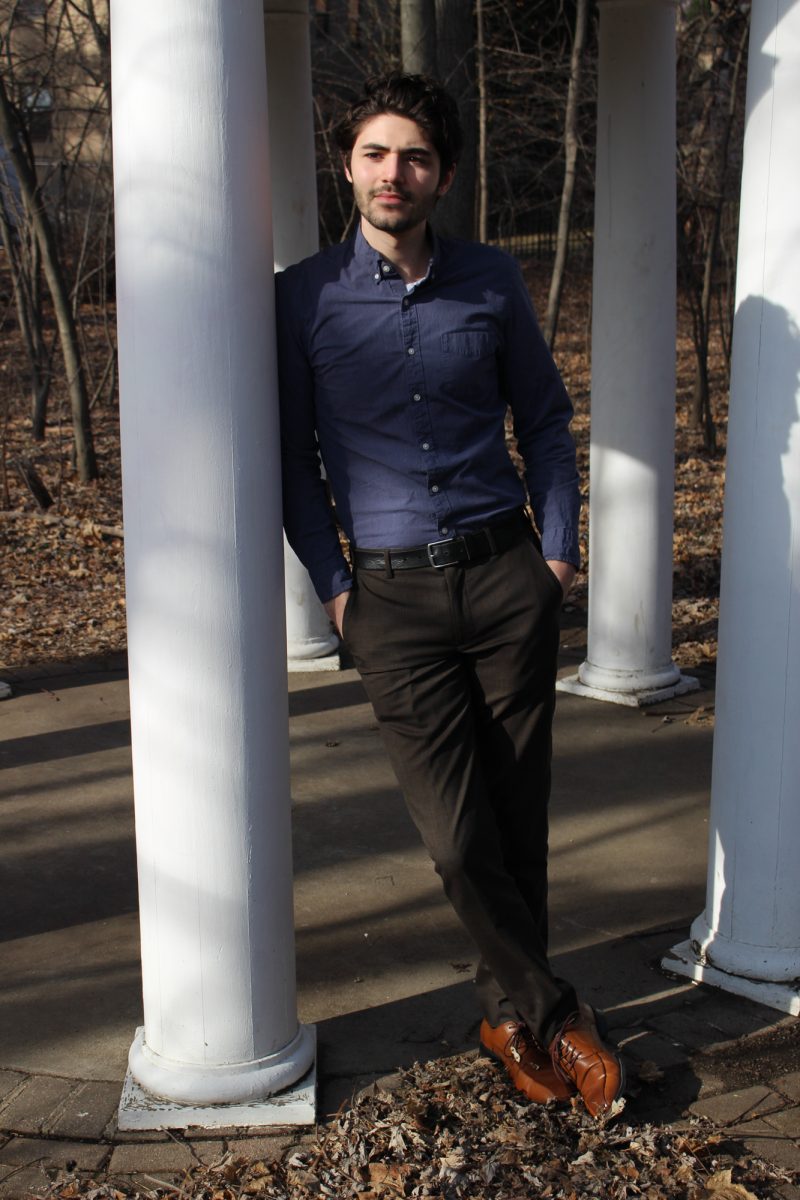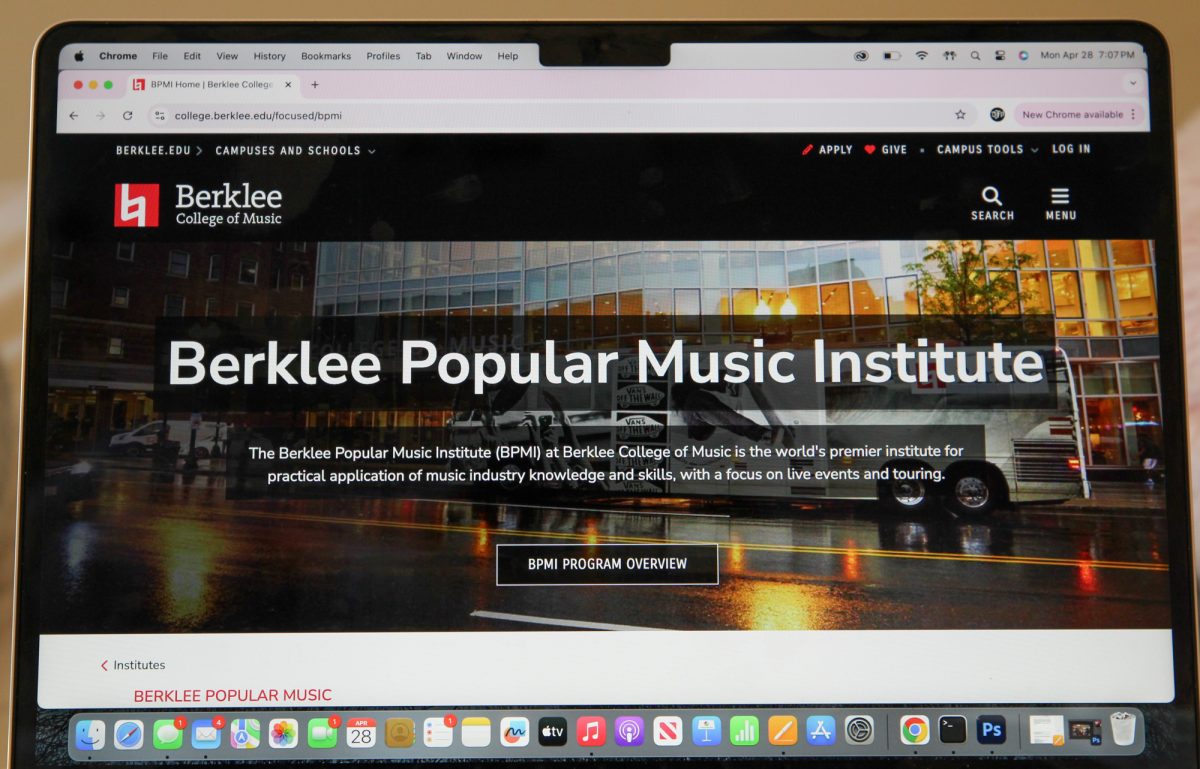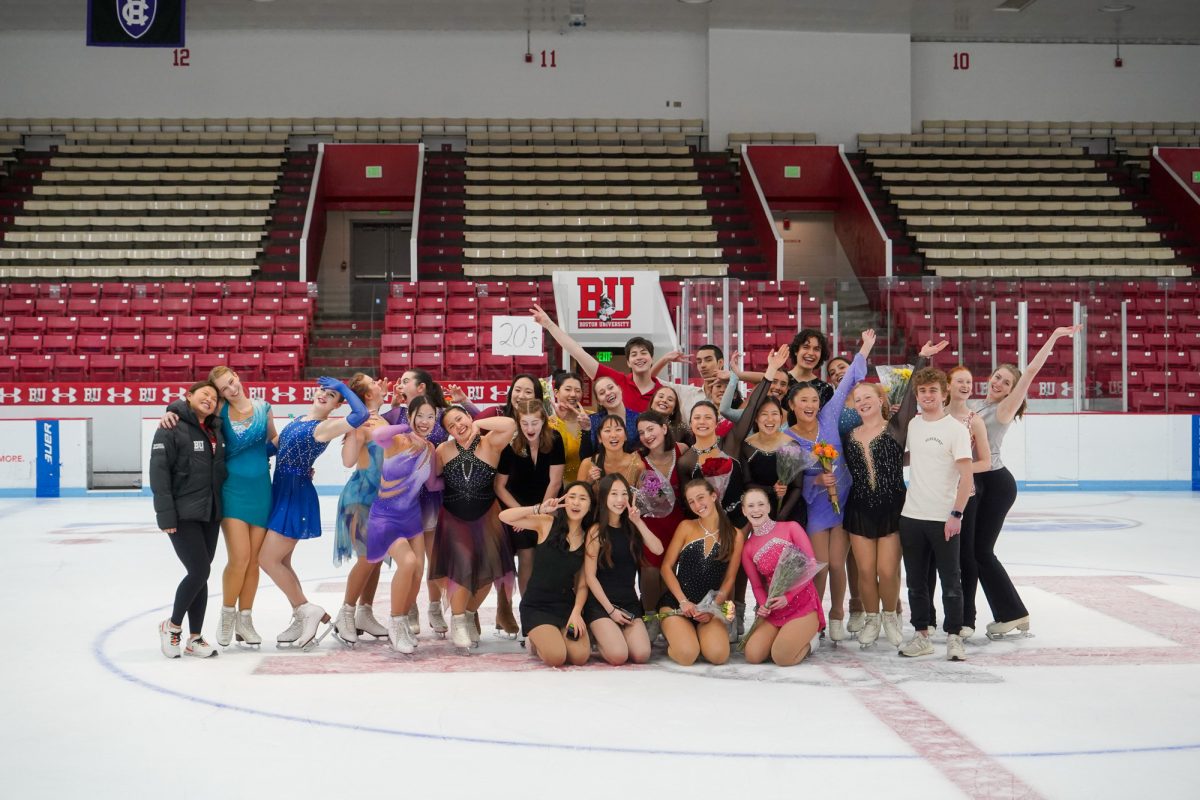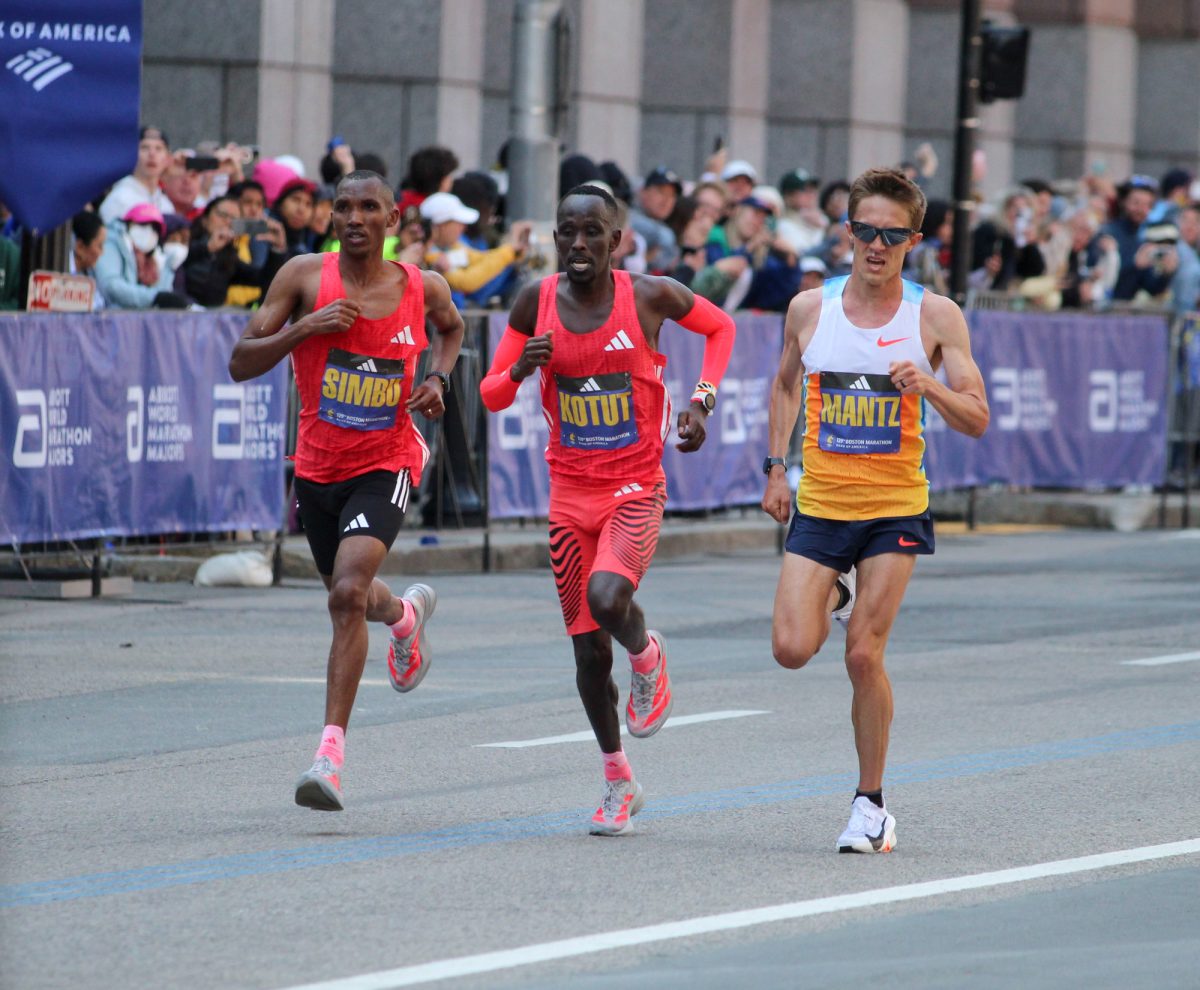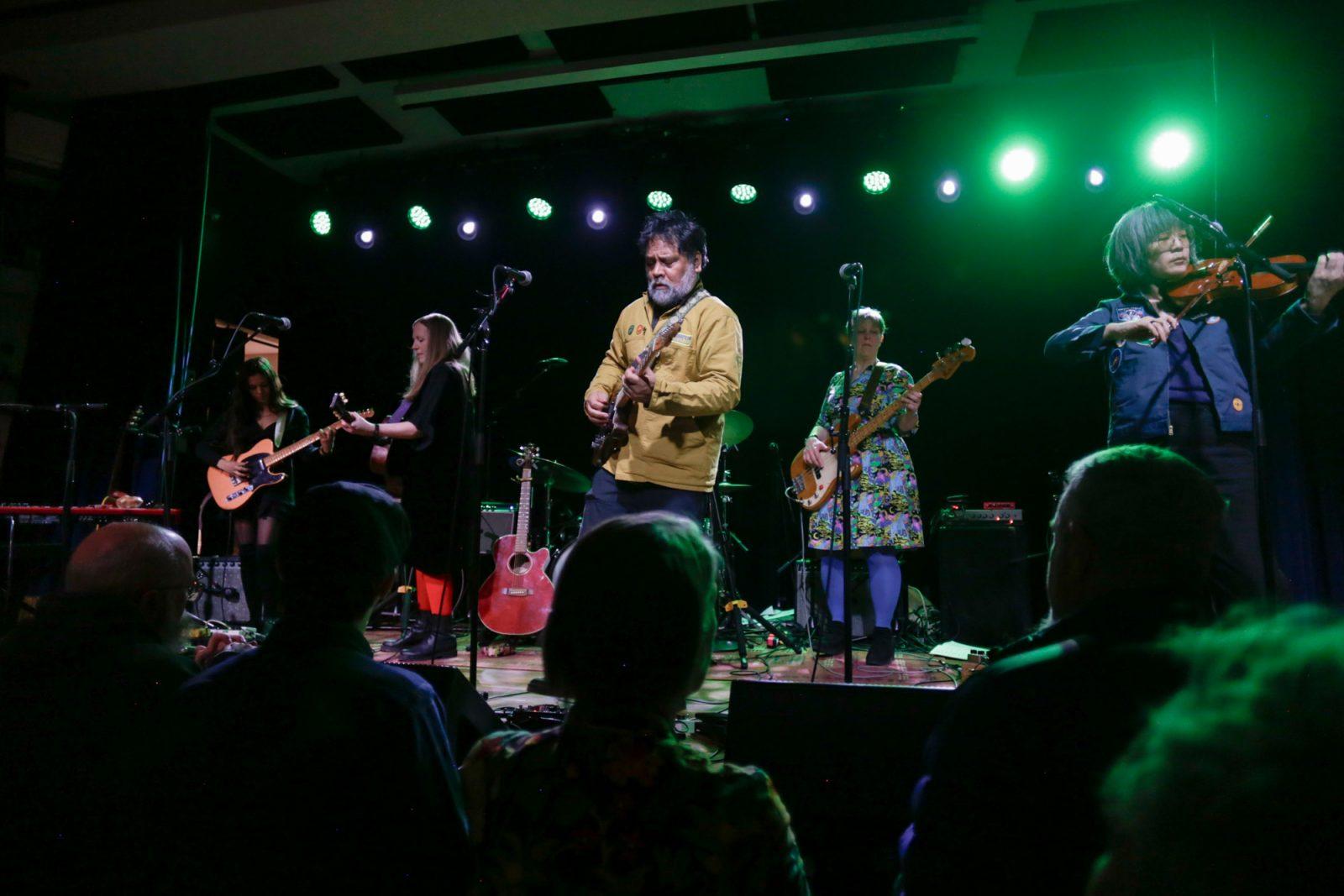For stumbling students, locals referencing a landmark and baseball fans looking to left field at Fenway Park, the Citgo sign illuminating the streets below symbolizes the city — from across the street or the other side of town.
“It symbolizes Boston and Kenmore Square,” Citgo sign expert Robert Sawyer said. From the apparently inexplicable placement of a neon sign atop a bookstore to the origins of baseball’s greatest scandal, Kenmore Square has seen it all — and changed its name a few times over the years.
Kenmore started out as Sewall’s Point — a small slice of land that jutted out into the Charles River before surrounding tidal flats were filled in the 19th century. Although many people think Kenmore’s history begins in the early 1900s, Robert Krim, executive director of the Boston History ‘ Innovation Collaborative, refutes this misconception.
“Kenmore Square has an incredible history that goes back to the founding of the region,” he said.
Not only the intersection of Beacon, Deerfield and Kenmore streets and Commonwealth and Brookline avenues, Kenmore Square is a point of convergence for many strands of American history, from colonialism to commercialism.
“Kenmore Square is a microcosm of Greater Boston’s history,” Krim said.
FROM COLONIAL TO KENMORE
Kenmore first made its appearance on city maps as Sewall’s Point. Unlike much of Fenway and the Back Bay, the land on which Kenmore is located was not under water when the city was expanding in the early-19th century, Boston University archeology fellow Nancy Seasholes said.
The namesake for the landmass was Samuel Sewall, a 17th-century judge famous for his role in the Salem Witch Trials, Krim said. Sewall was the only judge to later apologize for the trials and became an early abolitionist.
The Sewalls’ estate was named Brook Line, a reference to the Muddy River, which formed the boundary of the family plot, the Collaborative noted in its 2002 report on the history of Kenmore and the surrounding neighborhood.
Revolutionary troops set up Brookline Fort at Sewall’s Point during the Revolutionary War. In the first quarter of the 19th century, Mill Dam was constructed with a 50-foot-wide road running along the top. This strip of land became Beacon Street and provided a route to the square not-yet-named-Kenmore and the city outskirts from central Boston. Railroad tracks criss-crossed the area around the dam as technology expanded.
Substantial land filling around Kenmore Square occurred in the 1880s and 1890s, Seasholes said. A mix of gravel, mud and silt dredged from the river covered the tidal flats around Sewall’s Point. Tidal flats, areas of land that are water-covered at high tide but clear at low tide, often made Fenway a foul-smelling neighborhood. Boston’s tidal fall, the difference between high and low tides, is unusually high at 10.2 feet, Seasholes said.
Frederick Law Olmsted solved problems with muddy land and unpleasant smells by creating the Emerald Necklace of park spaces with a 1877 proposal to the city.
Seasholes, author of Gaining Ground, a history of the expansion of made land in Boston, said that the land from Deerfield Street to University Road on the newly-made Bay State Road was developed by the Riverbank Improvement Company run by President John Quincy Adams’s grandsons.
After land making was completed in 1891, Classical Revival brownstones began popping up along Bay State, following standards restricting building materials to brick, stone and iron and requiring dwellings to be set back 20 feet from the street with bowfronts projecting no more than five feet.
The Charles River abutted the row of mansions, and the seawall that protected buildings from the river can still be seen today, running along Storrow Drive.
“Leading citizens originally owned the town houses,” Seasholes said. The residence now called the BU Castle was built in 1905.
In the 1920s and 1930s, Seasholes said, the wealthy residents who had built homes along Bay State Road left for the suburbs, and brownstones were portioned off for use as apartments and doctors’ offices. Boston University gradually purchased residences on Bay State Road. Kenmore Square underwent a culture change as the wealthiest residents moved out and universities began to move in.
Kenmore picked up its current name with its new identity. Called Governor Square during the early 20th century, Krim said, the square had been proposed as the site for the gubernatorial mansion. By the 1930s, plans had not taken off, and area residents were calling the square Kenmore, after the small street that marked a trolley stop at the east end of the square.
SEE IT GO
Bostonians have been flocking to Kenmore Square to catch ball games for a century. The Boston Red Sox, founded in 1901, played their first game at Fenway Park, a 7-to-6 victory over the New York Highlanders, the team that later became the New York Yankees, in 1912.
BU College of Arts and Sciences 2004 graduate David Bartone said one of his favorite Kenmore episodes is the famous fixing of the 1919 World Series. Gambler Joseph “Sport” Sullivan and Chicago White Sox first-base man Arnold “Chick” Gandil hatched a plan to pay off the Sox and throw the series to the Cincinnati Reds in a room at the Hotel Buckminster, located at the intersection of Brookline Avenue and Beacon Street.
Kenmore Square was a center of hotel development in the early 1900s. Babe Ruth favored the Myles Standish Hotel, opened in 1925, while the Kenmore Hotel, at the corner of Kenmore Street and Commonwealth Avenue, was known as the residence of choice for Red Sox players.
The Hotel, which is now the Kenmore Abbey, was a favorite post-game stop for many fans seeking autographs. “That’s where most of the ball players would stay,” Sawyer said.
Sawyer, who grew up in Brookline and boasts that he owns the world’s largest archive of Citgo sign souvenirs and news clippings, remembers visiting the square after baseball games.
Michael Gitlin was studying at Grahm Junior College in 1967 when he watched the World Series from his dormitory window. The now defunct two-year college of about 500 students was located in buildings around Kenmore Square. Gitlin lived in the Hotel Buckminster, then called the Hotel St. George, where the college rented rooms.
“I inadvertently had a good seat,” Gitlin said of his view into the ballpark.
Gitlin frequented many Kenmore restaurants and bars that have now disappeared. One landmark remains, however.
“I still see that Citgo Sign,” he said.
The Citgo sign is a relic of a bygone era of signage — a large, circular aluminum sign for the White Fuel company once topped the Hotel Buckminster as well. The trimark, pulsating Citgo sign first made its appearance above the square in 1965, replacing a less-flashy sign that predated the current Citgo sign. The Cities Service Company, which eventually became Citgo, topped its divisional offices — now the Barnes ‘ Noble at BU — with a sign in 1940.
CHANGES IN THE SQUARE
While some people debate how “seedy” the square was in the second half of the 20th century, by the 1990s a clear plan for revitalization in the square directed by a BU presence had emerged.
By the 1990s, clubs like Rathskeller, which strongly influenced the development of punk in the 1960s through 1990s, had a established a presence in Kenmore Square.
When Bartone, a history student who worked with the Boston History Collaborative, arrived at BU in 1998 Kenmore Square was an “after-dinner-into-the-wee-hours-of-the-morning hot spot.”
“They had two liquor stores and several late, late-night eateries when I started,” he said.
Bartone saw changes continue in Kenmore Square until he graduated BU in 2004. With the building of the Hotel Commonwealth and the demolition of a strip of restaurants, bars and other retail establishments, “There was a real culture change,” he said.
“The kind of people who used to be there are now in Allston or Central Square,” Bartone said.
Bartone said that although the vibe in the square has changed over time, it has remained relevant to innovation.
“Boston had a reputation for being a very smug culture,” Bartone said of the whole city from the last quarter of the 19th century to World War II. After the mid-20th century, however, Kenmore was known to some as “very seedy.”
Because of proximity to BU, the Massachusetts Institute of Technology and the Longwood Medical area, Bartone thinks Kenmore “really is a nexus of a lot of factors that are really important to the future of innovation.”
Some, like Sawyer, say Kenmore Square was never an unsafe place.
“Boston University was very involved there and it was not seedy,” he said, referring to the campus bookstore’s move to Kenmore in 1983.
“Kenmore Square is being transformed vastly for the better,” BU spokesman Colin Riley, a student at Northeastern University in the late 1970s who then visited Kenmore Square, said.
Riley said that “through foresight, effort and investment” BU was able to purchase several properties in the area and “transform Kenmore from a seedy, even dangerous square” into the mixed-use spaces students see today.
BU executive vice president Joseph Mercurio led the way with several university development plans, including the building of the Hotel Commonwealth, a European-style luxury hotel in the square that broke ground in 2001.
Riley said the university is a limited partner of Great Bay Holdings, the developer that built the Hotel Commonwealth. BU sold several properties for the construction of the hotel to go forward and maintains a relationship with the hotel.
The BU Office of Rental Property management lists several addresses along Beacon Street in Kenmore Square as rental properties for commercial use. Riley said the “anchor” of the square is the campus bookstore.
In his 2003 convocation speech, then-Chancellor John Silber called the Hotel Commonwealth and the bookstore in Kenmore Square, along with the School of Management, Photonics Center and Student Village, signs of “continuing process” for the university.
The Massachusetts Bay Transit Authority’s current renovation project at Kenmore Square broke ground in March 2005 and was scheduled for completion in January 2006. In March 2007, The Boston Globe reported that the project was 10 months behind schedule. Construction for the design, which includes extensive surface renovations, a glass canopy and station improvements continues.
“We’re pleased [the station renovation] is heading toward completion,” Riley said.
The first written reference to the Kenmore Square area is in an 1632 journal entry by Massachusetts Bay Colonial Governor John Winthrop, the Boston History Collaborative found. Nearly 400 years of history dwarf MBTA delays by centuries.

